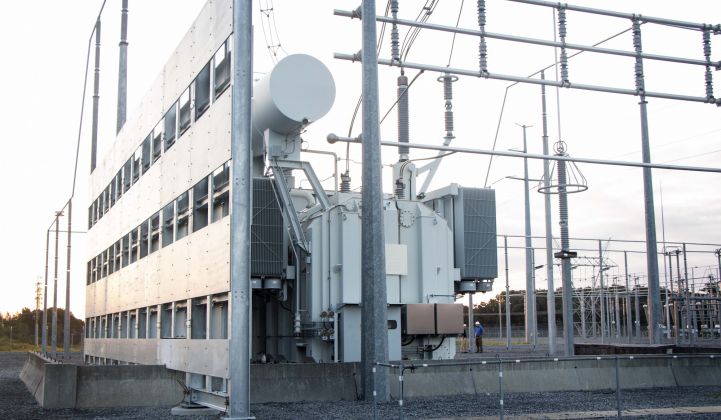Cyberattacks on the grid get a lot of attention these days, but good old-fashioned kinetic weapons have done more damage to U.S. electrical infrastructure so far.
Utilities across the nation have experienced seemingly random firearm attacks on electrical substations, which can damage or destroy the expensive equipment within. Sometimes it appears to be destructive pranksters; other times the damage looks more premeditated and sinister.
Prominent attacks, like one in 2013 against PG&E's Metcalf Substation, prompted federal energy regulators in 2014 to create CIP-014, a physical security standard for critical grid infrastructure.
But, as utilities develop defenses and respond to these incidents, they don't want to make a lot of noise about the issue for fear of inspiring copycats. Last week's deadly school shooting in Florida offered yet another case study of how one attack, filtered through the internet and social media, can prompt others to follow suit.
"You want to identify where you're vulnerable and protect that, quietly," said Buddy Reneau, a division manager at grid equipment company Southern States.
That makes for unusual conditions in which to develop and market a potential solution.
Even with limited publicity and advertisement, new products are trickling to market. I learned about one at the Distributech conference in January: Southern States' modular ballistic panels.
It's possible to fortify substations with heavy concrete or steel walls, but that's an expensive, maximalist approach. In the event they get fired upon, they could cause bullets to ricochet unpredictably, damaging other substation equipment.
A sturdy defensive wall could also block airflow, causing the machinery to overheat or perform below its full capacity, and it limits access to conduct repairs if needed.
Southern States went a different route, developing and patenting panels of layered, fiberglass-reinforced plastic. Upon impact, the layers delaminate, slowing and absorbing a speeding projectile (you can see the material stand up to a range of firearms in this video).
When it comes time to clean up the scene, the utility can simply pull off that panel and replace it with a new one.
Utilities can set these up around critical substation equipment, like a transformer, and keep them armored against bullet penetration. The panels attach to I-beams bolted into the ground, so they're easy to remove if technicians need to access the protected equipment.

In this installation, ballistic walls fully block the substation equipment from view. (Credit: Southern States)
This product can join a suite of other defensive options: cut-proof fencing, security cameras and audio devices to track and identify gunshots. Substations are typically unmanned, so it's crucial to have sensors onsite to communicate if an attack is in progress.
"If you’re stopping a bullet and nobody knows it’s there, there’s no one to stop them, and eventually they’ll find something to hit," said Dave Lombardo, general manager of the service division, which makes the panels.
His team has also developed a sensor that, if ruptured by a projectile, automatically sends out a call to report it.
The next step is getting the word out to potential customers. Southern States has built several ballistic defense projects itself, as well as supplying the panels to utilities to install. But, for security reasons, the company won't publicize who bought them or where they are deployed. That limits the possibility of customer testimonials.
"Our experience list is kind of zero because we can’t print one," Lombardo said.
That said, Southern States has been making high-voltage switching and support equipment for 100 years, so it has a network of sales reps who know the substation specialists at different utilities.
"Each utility knows that there’s a problem and knows they’ve got to address it, so the advertising part is not too bad," Lombardo said. Plus, he added, "Utilities are happy to talk to each other."
Closing the deal can be challenging, because money spent on this is a preventive measure for a low-occurrence, high-risk type of event.
"There really is no return on that investment unless someone goes out there and tries to damage that equipment," Lombardo said. "It’s also relatively new; no one’s had to do this before."
The CIP-014 standard will compel the industry to beef up defenses. Given that regulatory driver, the flexibility baked into the ballistic wall approach speaks for itself, Reneau added.
"Once a customer buys into that, they generally buy more than one because they see the advantages," he said.
The ballistic products remain a small part of Southern States' business, but one that could keep growing as utility attention increases. The 2017 hurricane season served to renew focus on the physical vulnerabilities of the grid, reminding utilities and customers alike not to take it for granted.
After two and a half decades in the industry, Lombardo sees some real changes in motion.
"What used to be acceptable for physical security has changed greatly in the last four or five years," he said. "It’s not just about keeping people out so they don’t get electrocuted -- we have to keep people out so they don’t destroy our infrastructure for nefarious reasons or the ‘taking potshots on a Saturday’ type of thing."




